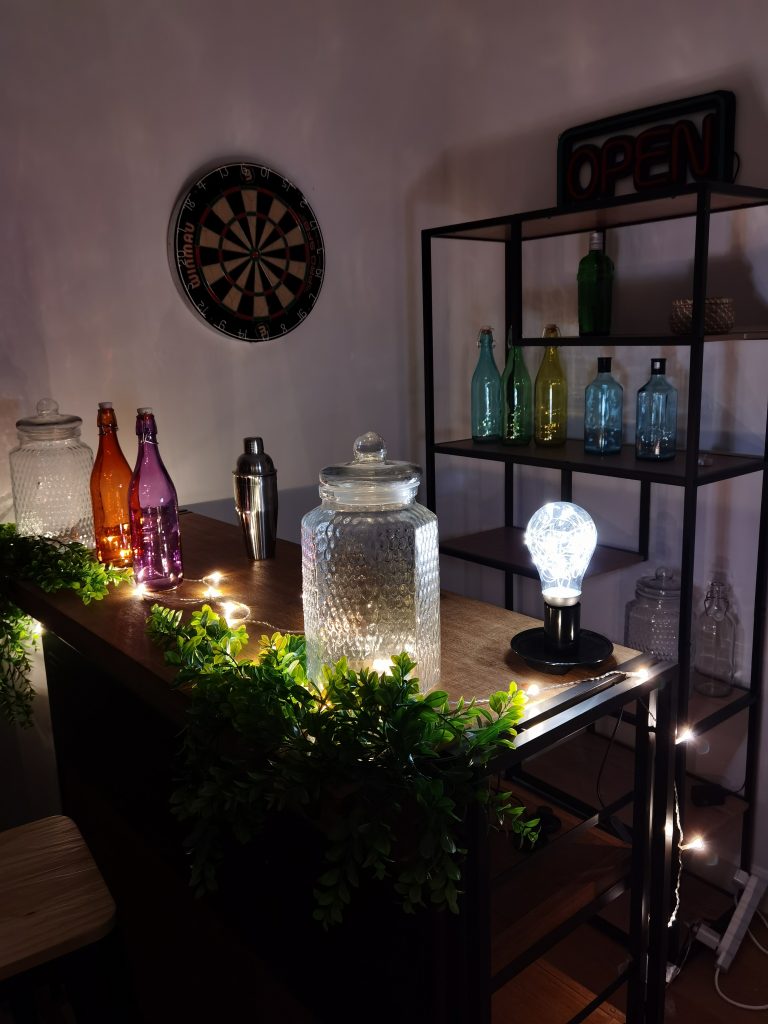Updated: Huawei P40 Pro Camera review – Great stills, outstanding video – DXOMARK
Please note: In October 2020, we updated the DXOMARK Camera test protocol. Version 4 now includes image preview tests and a wide range of new test scenes as part of our new trustability evaluation which measures the camera’s ability to deliver consistent still image and video quality across all shooting scenarios. We have retested this device using the new version 4 of the test protocol and produced this completely updated review. For more information, please see our article about preview, trustability and other version 4 updates of the DXOMARK Camera test protocol.
Huawei’s P40 Pro is the company’s latest P-series high-end smartphone, and features the Kirin 990 5G chipset, a 6.58-inch Full-HD+ OLED display with rounded edges, and dual front camera. Huawei tends to use the P-series models to showcase the company’s latest mobile camera technologies, and the brand-new P40 Pro, its P-series flagship device for 2020, is no different, with camera specs and features that any competitor will find hard to match. Let’s take a closer look.
Mục lục bài viết
Main camera
The primary camera comes with a very large 1/1.28″ 50MP Quad-Bayer sensor that produces 12 MP image output. As with other devices with similar sensors, it uses pixel binning to increase dynamic range and low-light capabilities. The lens features an f/1.9 aperture and nominal 23 mm-equivalent focal length; however, Huawei crops the field of view to a more conventional 27 mm. This decision was presumably made in order to design a thinner camera unit, but it should also help with reducing such artifacts as corner softness and distortion. Optical image stabilization, which can be challenging to implement on such large image sensors, is on board as well.

Taking pictures with the new Huawei P40 Pro
Ultra-wide camera
Like with the Mate 30 Pro, Huawei implements a large and high-resolution image sensor (40 MP 1/1.54″) in its ultra-wide camera, which combined with a fast f/1.8 lens, should make for excellent low-light image quality. The downside of such a large sensor in the ultra-wide is lens design. It’s a challenge to design a lens that provides a very wide angle of view and still fits into the thin body of a high-end smartphone. This is why Huawei settled on a compromise at 18 mm, which is noticeably wider than the main camera, but not as wide as that of some competitors, such as the latest Samsung devices and iPhones, which offer 12 mm and 13 mm lenses, respectively.
Tele-camera
The P40 Pro’s tele-camera comes with technology similar to last year’s P30 Pro. The module is optically stabilized and uses folded optics to achieve a 5x optical zoom factor (125 mm equivalent).
“Field-of-view fusion” zoom
The P40 Pro doesn’t rely just on hardware alone for zooming, however. Like the P30 Pro, the P40 Pro uses software systems which Huawei calls field-of-view fusion and AI RAW, a combination of optical and algorithm-powered digital zooming that adapts to the chosen magnification factor. Only the primary camera is used for up to 2x magnification; the tele-camera takes over from 5x and longer. For intermediate zoom factors, the P40 Pro uses a fusion algorithm that combines image data from both cameras, merging several RAW frames from the main and tele cameras into one high-resolution frame, which is then cropped for zooming.
For optimal detail, the 5x tele-cam records image data at the center of the frame; it uses AI-refined image data from the primary camera to fill in the “missing” image areas around the edges. A deep learning algorithm improves detail on fine patterns and textures — quite an impressive feat, considering that autofocus, white balance, and other image parameters of both cameras all have to be in perfect sync for good results.
At the long end, the camera is capable of achieving a 50x zoom factor using a combination of optical zoom and super-resolution processing that stacks multiple RAW frames from the tele-cam.
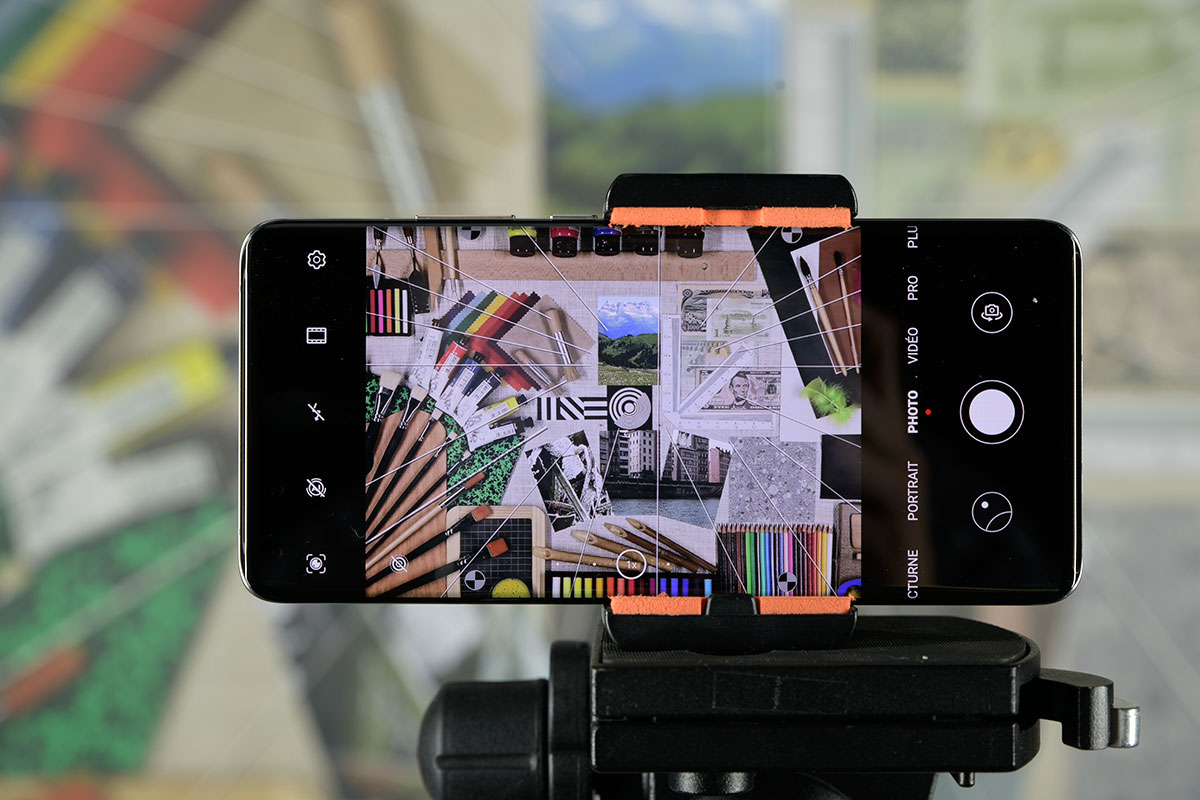
The Huawei P40 Pro in the DXOMARK lab
Improved bokeh mode with AI RAW and super-resolution
While the P30 Pro used AI RAW only for zooming, the P40 Pro now applies the technology to most camera modes, including bokeh. This means that as with zoom shots, bokeh images from the new model offer a wider dynamic range. The camera uses the 50 MP high-resolution sensor and an AI RAW-powered super-resolution algorithm to generate an image with a 54 mm-equivalent focal length and very good detail rendering. Data captured by a time-of-flight (ToF) laser measures the distance to objects in the scene, and is then used to confirm and fine-tune the initial depth-map that the primary and super-wide cameras generate.
Improved white balance and color rendering with multispectral sensor
The P40 Pro also comes with a new white balance system that uses a semantics-based neural network and data-driven methods for more accurate white balance. The system also gets help from a multispectral sensor that can measure specific colors more accurately than the image sensor.
Autofocus with dual phase detection on all sub-pixels
The new autofocus system comes with dual phase detection on all sub-pixels and can use all pixels for autofocusing. In low light, the system also makes use of subject distance information that the ToF laser sensor captures.
Key camera specifications:
- Quad camera setup, including ToF sensor
- Primary: 50MP 1/1.28″ sensor (12MP output), 23mm-equivalent (1x defined as 27mm) f/1.9-aperture lens, full-pixel Octa-PD, OIS
- Ultra-wide: 40MP 1/1.54″ sensor, 18mm-equivalent f/1.8-aperture lens, PDAF
- Tele: 12MP 1/3.56″ sensor, 125mm-equivalent f/3.4-aperture lens, PDAF, OIS
- ToF 3D depth-sensing camera (78-degree FOV)
- LED flash
- 4K video, 2160p/60fps (2160p/30fps tested); default is wide-angle camera 1080P/30fps
- Multispectral color temperature sensor
About DXOMARK Camera tests: For scoring and analysis in our smartphone camera reviews, DXOMARK engineers capture and evaluate over 3000 test images and more than 2.5 hours of video both in controlled lab environments and in natural indoor and outdoor scenes, using the camera’s default settings. This article is designed to highlight the most important results of our testing. For more information about the DXOMARK Camera test protocol, click here. More details on how we score smartphone cameras are available here.
Test summary
Scoring
Sub-scores and attributes included in the calculations of the global score.
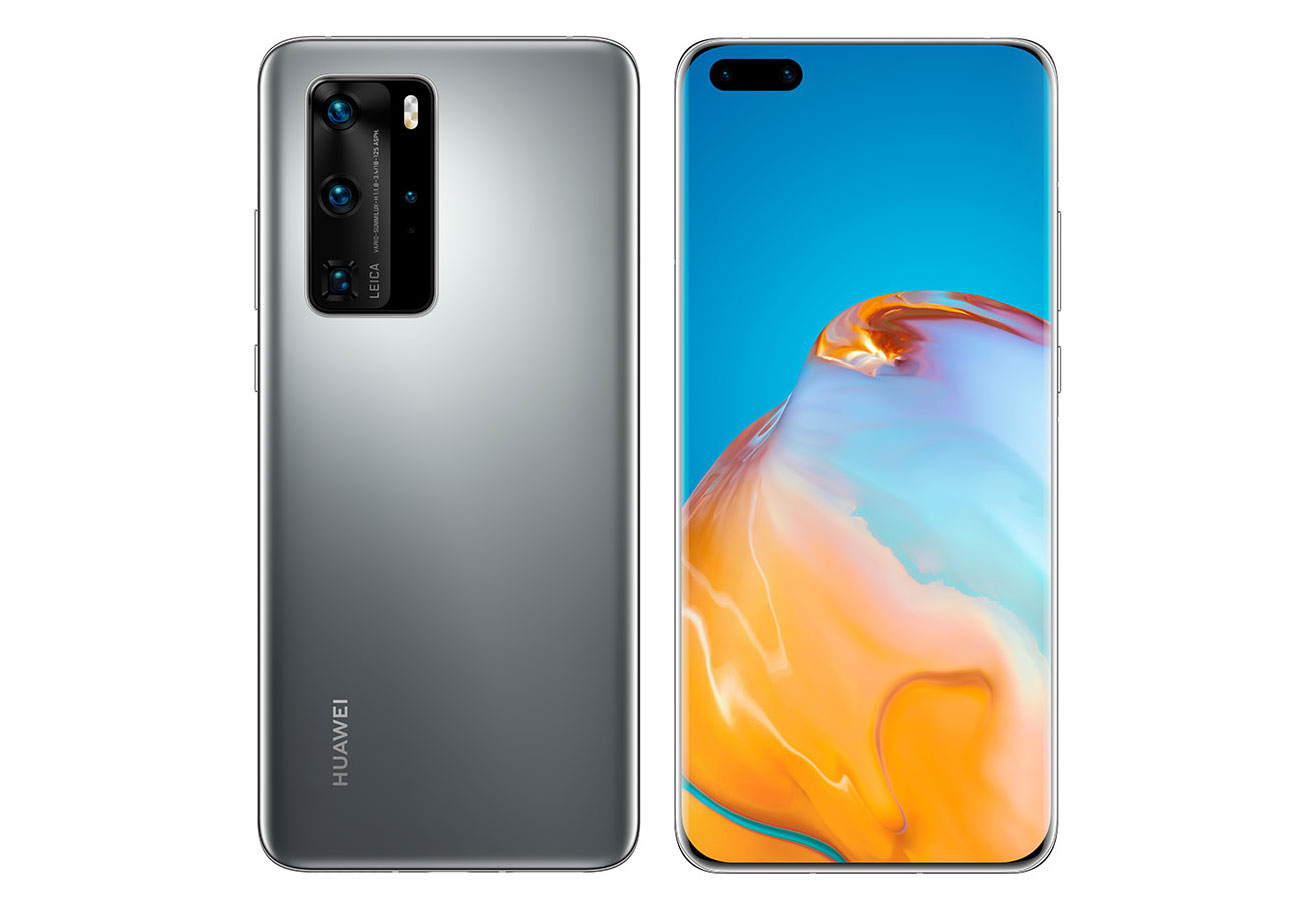
Huawei P40 Pro
129
camera
130
photo
Exposure
109
117
Best: Honor Magic5 Pro (117)
Color
91
119
Best: Google Pixel 7 Pro (119)
Autofocus
80
116
Best: Huawei Mate 50 Pro (116)
Texture
104
114
Best: Honor Magic5 Pro (114)
Noise
110
116
Best: Honor Magic5 Pro (116)
Artifacts
77
81
Best: Google Pixel 6 (81)
75
bokeh
Bokeh
75
80
Best: Honor Magic5 Pro (80)
45
preview
Preview
45
91
Best: Apple iPhone 14 Pro Max (91)
124
zoom
Tele
104
116
Best: Honor Magic4 Ultimate (116)
Wide
63
117
Best: Huawei Mate 50 Pro (117)
127
video
Exposure
93
115
Best: Apple iPhone 14 Pro Max (115)
Color
95
117
Best: Apple iPhone 14 Pro Max (117)
Autofocus
100
117
Best: Apple iPhone 14 Pro Max (117)
Texture
110
115
Best: Xiaomi Mi 11 Ultra (115)
Noise
108
118
Best: Samsung Galaxy A23 5G (118)
Artifacts
78
86
Best: Xiaomi 12S Ultra (86)
Stabilization
114
117
Best: Apple iPhone 14 Pro Max (117)
Use cases & Conditions
Use case scores indicate the product performance in specific situations. They are not included in the overall score calculations.
BEST 168
Top score
%s
Outdoor
Photos & videos shot in bright light conditions (≥1000 lux)
BEST 157
Top score
%s
Indoor
Photos & videos shot in good lighting conditions (≥100lux)
BEST 127
Top score
%s
Lowlight
Photos & videos shot in low lighting conditions (<100 lux)
BEST 143
Top score
%s
Friends & Family
Portrait and group photo & videos
Please be aware that beyond this point, we have not modified the initial test results. While data and products remain fully comparable, you might encounter mentions and references to the previous scores.
At an overall DXOMARK Camera score of 132 points under the new version of our test protocol, the Huawei P40 Pro still offers one of the very best smartphone cameras available. Its Photo score of 137 is also one of the highest of all cameras tested under version 4 of the test protocol, thanks to an excellent performance across pretty much all sub-categories.
The P40 Pro camera usually gets exposure right down to very low light levels, even for night shots, and images captured with the Huawei P40 Pro have a very wide dynamic range, recording good detail in both highlight and shadow areas of the frame. The camera’s texture/noise tradeoff is also among the best we have seen. Under close inspection, images have nicely rendered fine detail and low noise, even when taken in suboptimal light conditions. In addition, the Huawei is capable of creating nice bokeh-simulation shots with decent subject isolation and good detail, making it a good option for portrait shots.
There really isn’t much to criticize about the Huawei’s still image output overall, but if we have to pick one area for improvement, it would be color. Color rendering is generally nice, but our testers did occasionally observe inaccurate color rendering and white balance casts, especially when shooting in difficult high-contrast scenes. We also sometimes saw slight underexposure in bright light, and a lack of fine detail in faces and strong chroma noise in night mode captures.
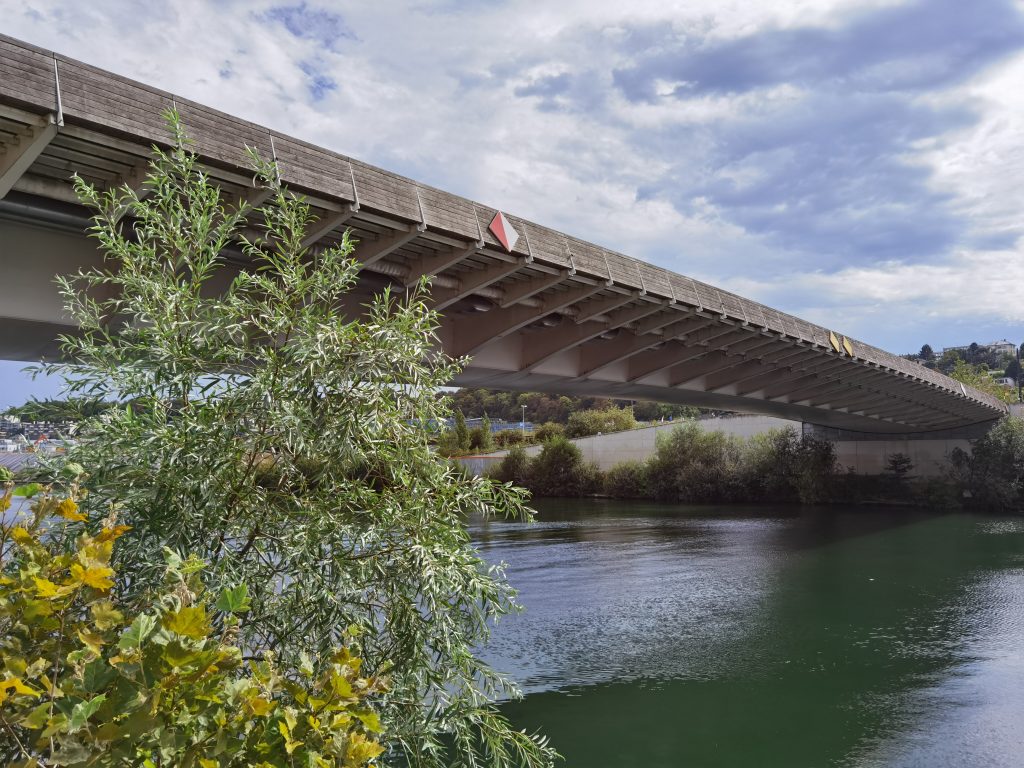
P40 Pro images show excellent dynamic range and an outstanding balance between texture retention and noise reduction.
At 86 points the P40 also does very well for our new Zoom sub-score. However, the score is largely based on excellent results in the tele category. The P40 Pro’s tele-zoom shots, especially those captured at medium and long zoom range, offer very good detail and low noise levels. At short zoom factors, the camera relies on Super-Resolution digital zoom only, however, which means that image detail suffers a little.
Image quality in general is excellent for the ultra-wide camera, too, but the angle of view is narrower than on many competitors which means that sometimes you might not be able to squeeze quite as much scene into the frame as you would like.

The ultra-wide camera delivers excellent image quality in all conditions and is limited only by a comparatively narrow field of view.

Bokeh shots show very good subject isolation and detail.
The P40 Pro is not only an excellent choice for still image shooters. It’s just as capable in the video department which is reflected in an outstanding Video score of 113 – the highest to date. Like for photos, the balance between retention of fine detail and noise reduction is very well managed in video clips, and the P40 Pro’s 4K footage offers very nice rendering of fine textures and detail. Colors are nice and exposure is good in most lighting situations, with the Huawei delivering brighter video exposure in low light than many competitors. Dynamic range is only acceptable, though, and you’ll likely have to live with some highlight and/or shadow clipping when recording high-contrast scenes.
The video stabilization is one of the best we have seen and is particularly good at compensating for camera motion, so your videos will have that smooth steadycam effect when you are walking or even running while recording. Combine that with a fast and accurate video autofocus that is also very good at subject tracking, and you’ve got yourself a real mobile video recording powerhouse.
On the downside, some noise artifacts can be visible in the Huawei’s footage, including temporal noise on textures and moving objects in low-light scenes, as well as color quantization (again in low light) and some noticeable sharpness differences between video frames.
Huawei P40 Pro outdoor video clips have excellent detail.
Photo scores explained
The Huawei P40 Pro achieves a Photo score of 140 points, making it the best device for still images to date. The Photo score is calculated from sub-scores in tests that examine different aspects of a device’s performance for still images under different lighting conditions. In this section, we take a closer look at how these sub-scores were determined and compare image quality against some key competitors.
Exposure and Contrast
Huawei P40 Pro
100
111
Honor Magic4 Ultimate
Best: Honor Magic4 Ultimate (111)
The Huawei P40 Pro does very well for exposure, with good target exposure and a wide dynamic range across all light levels.
In this indoor scene the Huawei manages to retain decent highlight detail in the brightly lit exterior. In comparison, the window is completely blown out in the Apple iPhone 11 Pro Max image. The Xiaomi does pretty well, too, but has more highlight clipping than the P40 Pro.

Huawei P40 Pro, excellent highlight retention
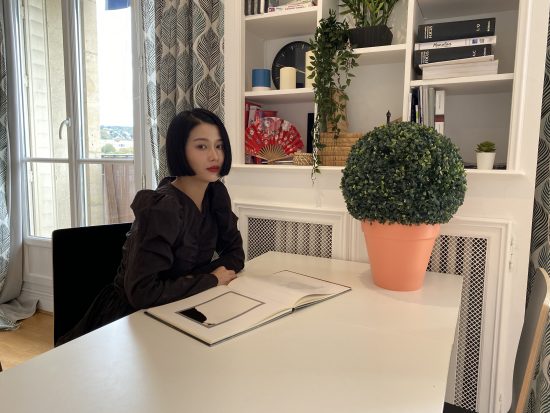
Apple iPhone 11 Pro Max, blown out highlights

Xiaomi Mi 10 Ultra, some clipping
Our contrast entropy measurements shows that the Huawei is capable of delivering both good highlight and shadow detail across light levels from 20 to 1000 lux, even in extreme HDR scenes, with a brightness difference of 7EV between the brightest and darkest areas. Both comparison devices show noticeable drops in scenes with such a high dynamic range (the 6-bit line in the graph marks the good quality threshold).
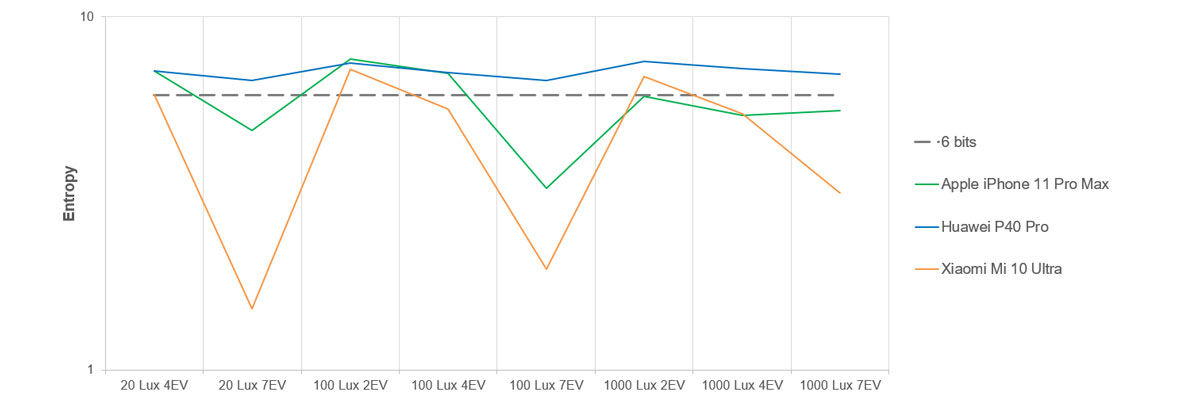
Entropy measurements from 20 to 1000lux / 2 to 7EV
Dynamic range is wide down to low light levels. In this shot, the P40 Pro captures good target exposure and manages to retain more of the bright detail on the tablet screen than the iPhone and Xiaomi. This said, we also saw the Huawei’s HDR rendering fail in some low-light scenes.
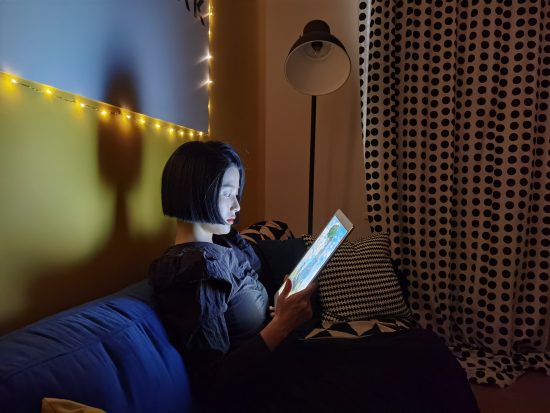
Huawei P40 Pro, excellent dynamic range
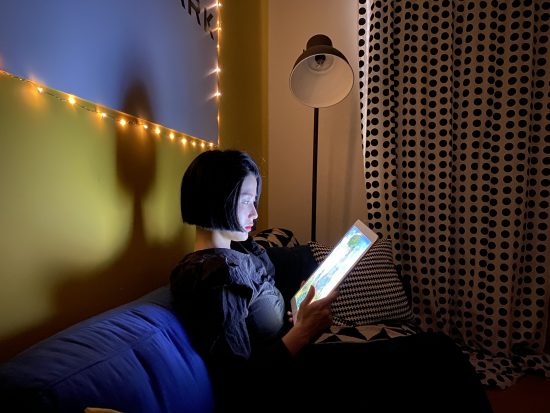
Apple iPhone 11 Pro Max, good dynamic range
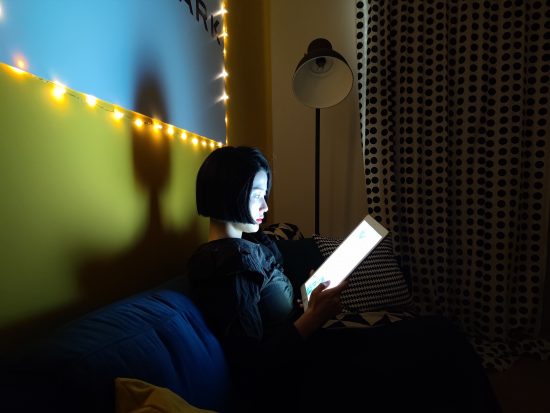
Xiaomi Mi 10 Ultra, lack of dynamic range
Color
Huawei P40 Pro
93
107
Apple iPhone 13 Pro Max
Best: Apple iPhone 13 Pro Max (107)
Overall color rendering and white balance still leave some room for improvement on the P40 Pro. White balance casts can sometimes be visible in HDR scenes, as in the scene below, which shows a fairly strong pinkish cast. This said, color is acceptable most of the time. White balance tends to be neutral with good color rendering under typical indoor light conditions. In very low light, for example candlelit scenes, white balance is still neutral, but our testers observed some slightly unnatural color rendering.
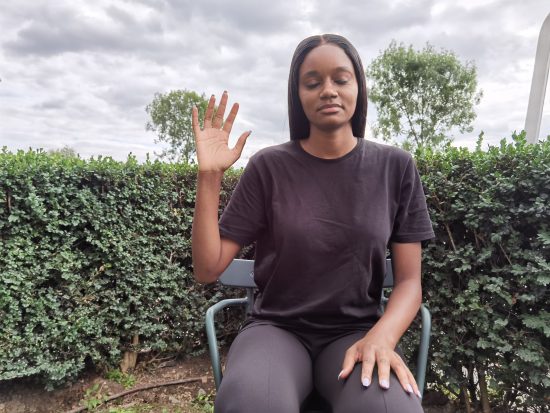
Huawei P40 Pro, pink cast
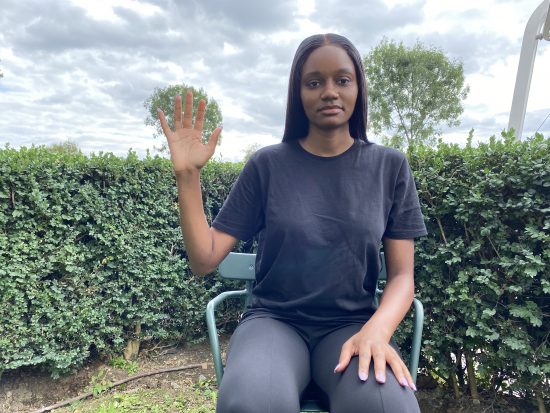
Apple iPhone 11 Pro Max, neutral color
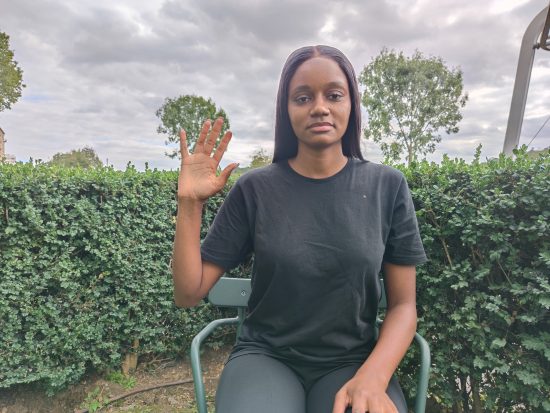
Xiaomi Mi 10 Ultra, slight orange cast
Autofocus
Huawei P40 Pro
83
109
Asus Smartphone for Snapdragon Insiders
Best: Asus Smartphone for Snapdragon Insiders (109)
The P40 Pro’s autofocus system does generally very well in normal light conditions, across all light levels, with the AF locking in pretty much immediately after pressing the shutter button and delivering good sharpness on the target. However, our new HDR autofocus tests revealed that in high-contrast scenes, the Huawei takes longer to focus than some competitors. This graph shows the measurement data for a HDR scene with a brightness difference of 7EV between the brightest and the darkest parts. In these conditions the Huawei shows a noticeable lag compared to the iPhone 11 Pro Max and Xiaomi Mi 10 Ultra.

AF comparison HDR scene (7EV)
We also found the camera’s depth of field to be slightly limited compared to some rivals. In this scene, the AF does the right thing and focuses on the front subject. The subject at the back is actually only one meter away but is already quite out of focus. In comparison the background subject is much sharper in the iPhone image. The Xiaomi actually puts the focus on the subject in the background, which isn’t a great decision from a photographic point of view.
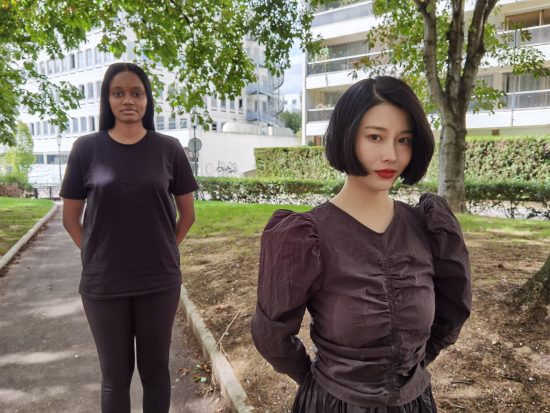
Huawei P40 Pro, depth of field

Huawei P40 Pro, crop, background subject out of focus
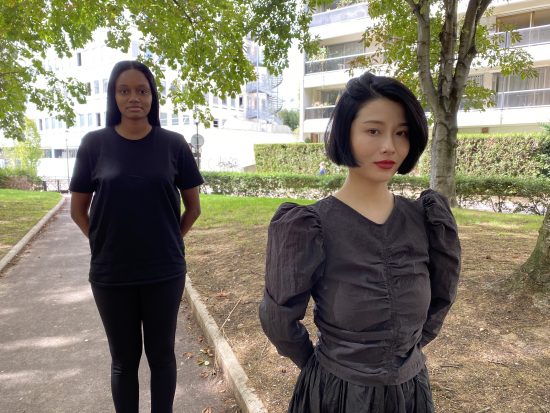
Apple iPhone 11 Pro Max, depth of field

Apple iPhone 11 Pro Max, crop, good focus on background subject
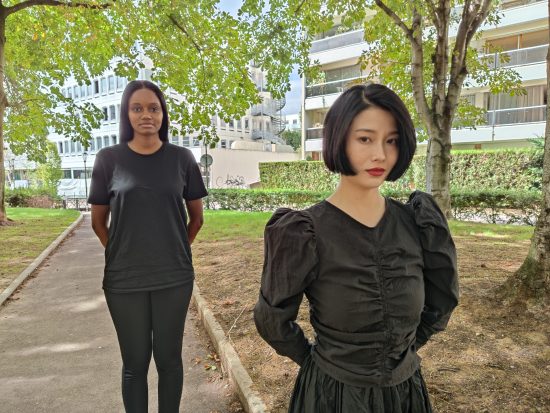
Xiaomi Mi 10 Ultra, depth of field

Xiaomi Mi 10 Ultra, crop, focus on background subject
Texture
Huawei P40 Pro
105
111
Xiaomi Mi 11
Best: Xiaomi Mi 11 (111)
Noise
Huawei P40 Pro
99
102
Honor Magic4 Ultimate
Best: Honor Magic4 Ultimate (102)
The Huawei P40 Pro delivers a very good texture/noise tradeoff, with very high texture scores in our new AI-based DMC texture measurement at all light levels. Both the iPhone 11 Pro Max and Xiaomi Mi 10 Pro achieve lower scores. While in bright light the gap between these devices and the Huawei is pretty much negligible, it does increase under typical indoor lighting and in low light.
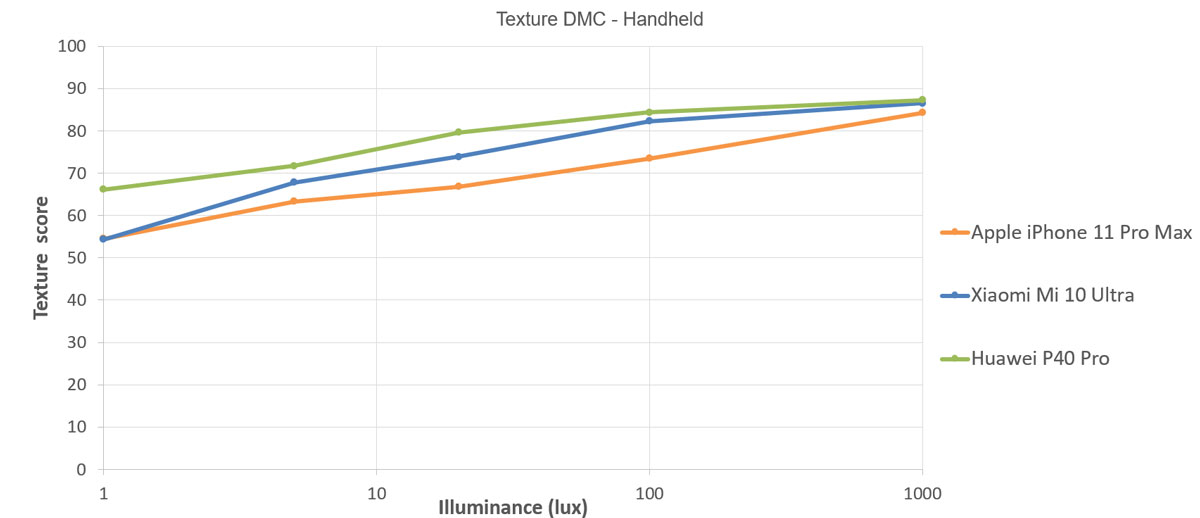
DMC texture comparison
These measurements are confirmed by our real-life shots. In this scene all three cameras deliver excellent detail with minimal noise in these conditions, and differences are minimal. Results are similar under typical indoor lighting conditions.
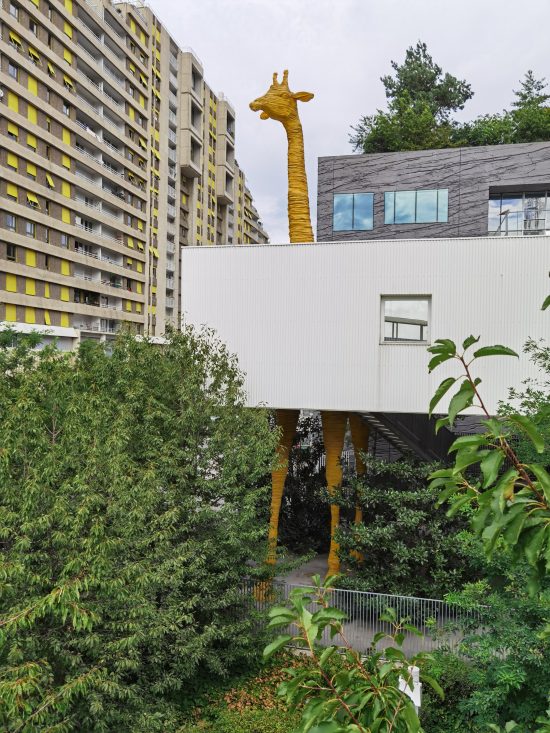
Huawei P40 Pro, outdoor texture and noise

Huawei P40 Pro, crop, excellent detail
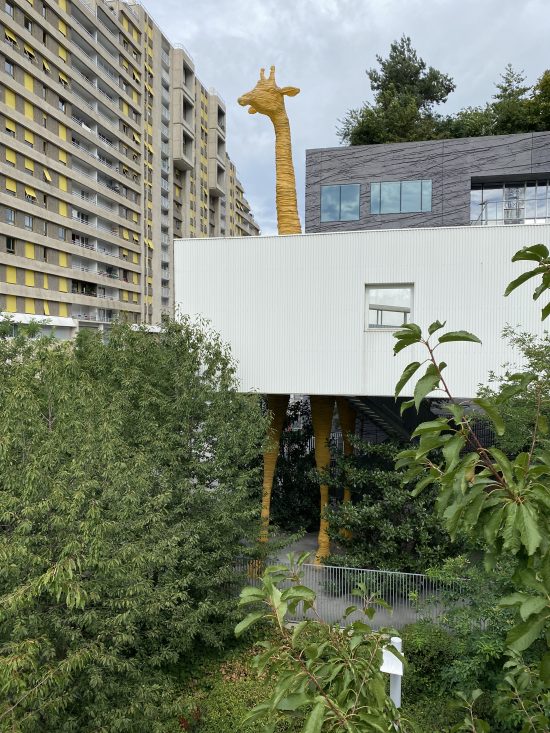
Apple iPhone 11 Pro Max, outdoor texture and noise

Apple iPhone 11 Pro Max, crop, excellent detail
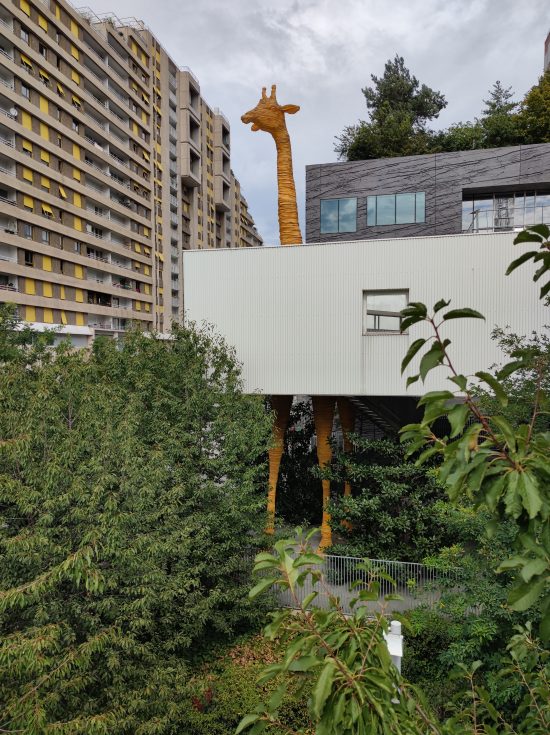
Xiaomi Mi 10 Ultra, outdoor texture and noise

Xiaomi Mi 10 Ultra, crop, excellent detail
Differences among the cameras become more visible in indoor conditions and low light. In this image, the P40 loses some fine detail but image noise is very well under control. The iPhone image is noticeably more noisy. The Xiaomi image has slightly more noise than the P40 Pro but detail is still excellent, and it delivers the best texture/noise tradeoff overall in this comparison.

Huawei P40 Pro, indoor texture and noise

Huawei P40 Pro, crop, very good detail, low noise

Apple iPhone 11 Pro Max, indoor texture and noise

Apple iPhone 11 Pro Max, crop, good detail, noise

Xiaomi M10 Ultra, indoor texture and noise

Xiaomi M10 Ultra, crop, excellent detail, low noise
Artifacts
Huawei P40 Pro
72
77
Google Pixel 6
Best: Google Pixel 6 (77)
The Huawei P40 Pro controls all kinds of image artifacts very well and deservedly achieves a very high score for this category. We deducted some points for a local loss of sharpness, color quantization, ghosting, and color fringing, which you can just about see in the sample below, but you’d have to look very closely to spot any of these effects in a real-life image.
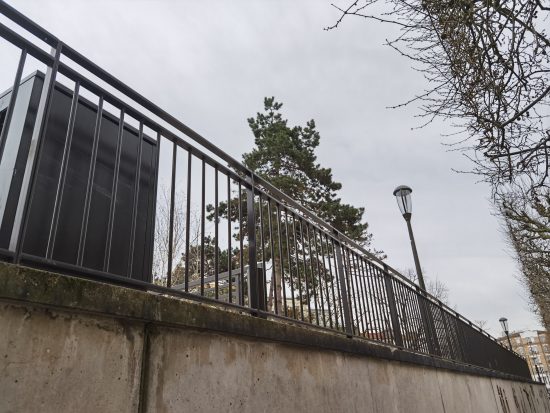
Huawei P40 Pro, color fringing

Huawei P40 Pro, crop, color fringing
Bokeh
Huawei P40 Pro
75
80
Huawei P50 Pro
Best: Huawei P50 Pro (80)
The P40 Pro also does very well for bokeh mode. Images captured in portrait mode show good subject isolation with only occasional small errors around the foreground subject. Further, its bokeh has a realistic shape, and background highlights are nicely shaped as well. Detail is also very good and noise levels low.
Thanks to improved processing, the P40 Pro bokeh mode now also benefits from a wider dynamic range, making it more suitable for use in difficult high-contrast situations than previous iterations. This is visible in the outdoor shots below, where the P40 Pro is capable of maintaining better detail in the bright background than the comparison devices. It also delivers the best detail-to-noise balance among the trio.

Huawei P40 Pro, outdoor bokeh

Huawei P40 Pro, crop, very good detail and dynamic range

Oppo Find X2, outdoor bokeh

Oppo Find X2, crop, good detail, highlight clipping

Apple iPhone 11 Pro Max, outdoor bokeh

Apple iPhone 11 Pro Max, crop, lack of detail, highlight clipping
The results are very similar for the indoor scene below. The P40 Pro image has a noticeably wider dynamic range and better detail than the Oppo and Xiaomi shots.

Huawei P40 Pro, indoor bokeh

Huawei P40 Pro, crop, excellent detail, wide dynamic range

Xiaomi Mi 10 Pro, indoor bokeh

Xiaomi Mi 10 Pro, very good detail, decent dynamic range

Oppo Find X2, indoor bokeh

Oppo Find X2, crop, slight lack of detail, highlight clipping
Night
Huawei P40 Pro
72
82
Huawei Mate 40 Pro+
Best: Huawei Mate 40 Pro+ (82)
The Huawei P40 Pro achieves an excellent score in the Night category, thanks to outstanding performance across all sub-tests. The flash usually triggers for portraits captured in flash-auto mode and images show good exposure and dynamic range. Exposure is not only good on the subject’s face but also for the background. It appears Huawei is using a frame-stacking algorithm with flash shots to achieve this. The Honor V30 Pro in the comparison below uses a similar approach, but the background is almost completely dark in the Oppo shot.

Huawei P40 Pro, flash-auto, good exposure and white balance

Oppo Find X2 Pro, flash-auto, good exposure on face, underexposed background

Honor V30 Pro, flash-auto, good exposure, slightly cool white balance
With the flash switched off, exposure is accurate and highlight detail is well maintained, thanks to a wide dynamic range. Images also show high levels of detail and low noise.
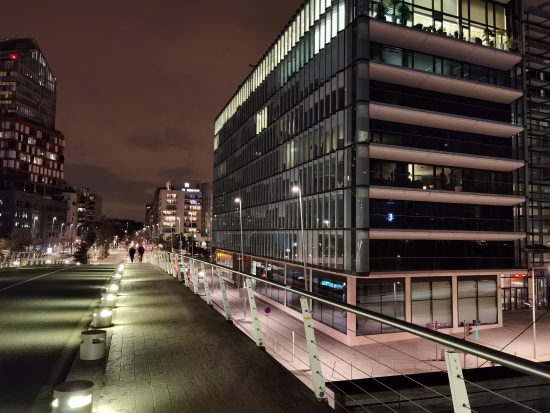
Huawei P40 Pro, flash off

Huawei P40 Pro, crop, very good detail
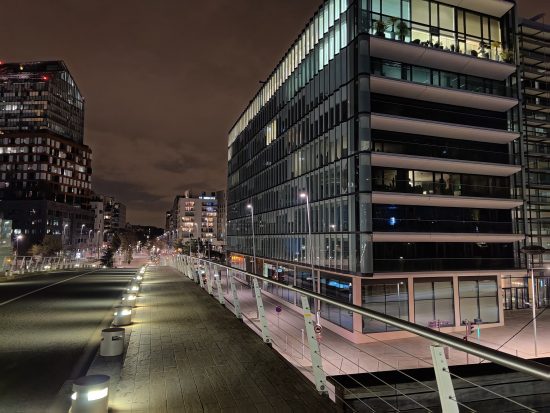
Oppo Find X2, flash off

Oppo Find X2, crop, slight lack of detail
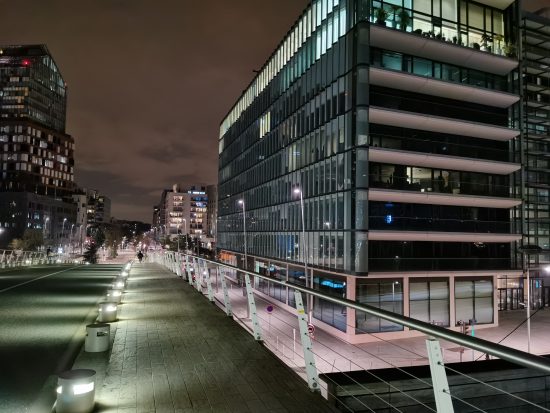
Huawei Mate 30 Pro 5G, flash off

Huawei Mate 30 Pro 5G, crop, good detail
Preview (43)
Preview is one of the more disappointing aspects of the P40 Pro’s performance, with noticeable inconsistencies between exposures, inaccurate bokeh simulation, and poor zoom smoothness. The lack of HDR processing on the preview feed results in a rather underwhelming image for photographers when composing, while the final results are often much nicer. Not only are highlights often clipped in preview, there’s also a significant difference in both the shadows and target exposures. You can see in this indoor example that the preview representation is muddy in the shadows and mid-tones. You may decide not to take the picture as a result, but in fact, effective HDR processing renders a much more accomplished final image.
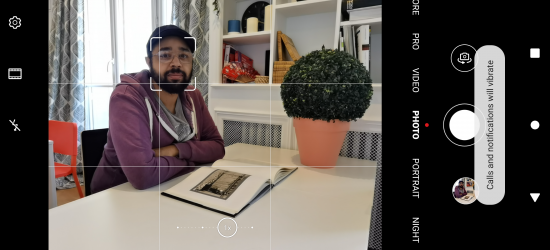
Preview, no HDR processing renders a disappointing image with clipped highlights, dark shadows, and flat color.

Capture, the resulting image bares very little similarity to the shot we saw in Preview.
Unfortunately preview doesn’t improve much in the P40 Pro’s bokeh rendering either. Bokeh on preview sometime fails to activate and when it does, depth estimation is particularly poor, with preview indicating that blur will be applied across much of the subject.
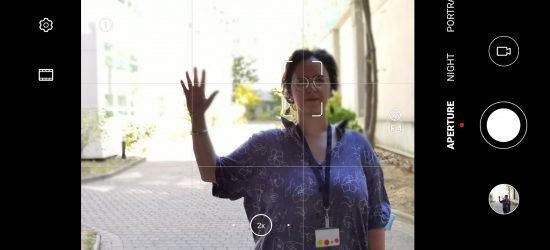
Preview: depth estimation is significantly different between preview and capture, with edges of the subject noticeably blurred.

Capture: subject segmentation and exposure are noticeably better in the end result.
Zoom smoothness on the the P40 Pro is particularly bad, with significant field-of-view jumps, as well as obvious white balance and exposure inconsistencies as the device switches between cameras. Focus is often lost temporarily at these points, too, and these strong oscillation effects are very distracting overall as you try to zoom on the P40 Pro.
Huawei P40 Pro, zoom preview
Zoom scores explained
The Huawei P40 Pro achieves a Zoom score of 86 points. The Zoom score is calculated from the tele and wide sub-scores. In this section, we take a closer look at how these sub-scores were achieved and compare zoom image quality against some key competitors.
Tele
Huawei P40 Pro
118
140
Honor Magic4 Ultimate
Best: Honor Magic4 Ultimate (140)
The Huawei P40 Pro is overall one of the best smartphones for tele-zoom images, but image quality varies quite noticeably with the zoom factor. At close range the Huawei produces images that are very clean and smooth, but a loss of detail compared to non-zoomed images is clearly visible. This is probably because the camera uses a Super-Resolution algorithm for digital zooming with the primary camera at close distance, rather than a dedicated tele-lens.
Overall image quality in the low-light shot below is still impressively good. The Huawei image is by far the cleanest in this comparison and also has better detail than the iPhone and the Google. Noise levels are higher on the latter and much higher on the iPhone.

Huawei P40 Pro, close-range zoom, low light

Huawei P40 Pro, crop, loss of detail, clean image

Apple iPhone 11 Pro Max, close-range zoom

Apple iPhone 11 Pro Max, crop, loss of detail, strong noise
![]()
Google Pixel 4, close-range zoom
![]()
Google Pixel 4, crop, loss of detail, noise
At medium range the camera combines image data from the primary and tele cameras, which can on some occasions lead to fusion artifacts. Overall, the level of detail is very high, though, and image noise is well controlled, as in this indoor shot where the P40 Pro again delivers the cleanest image. Detail is excellent, too.
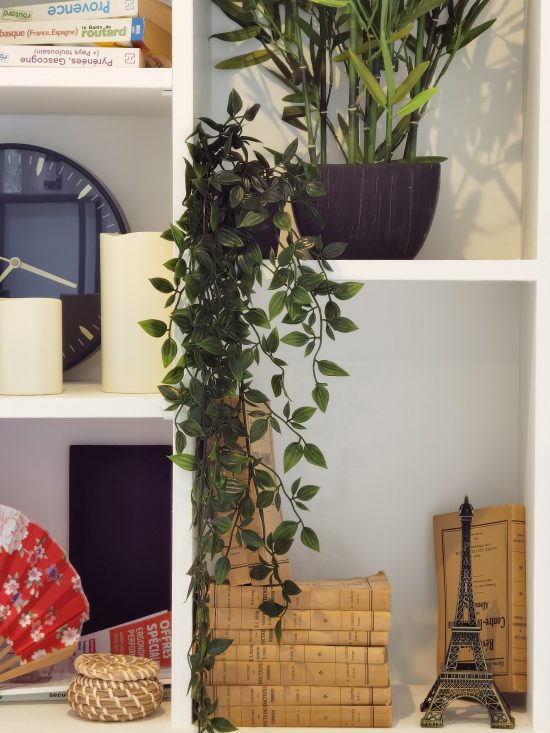
Huawei P40 Pro, medium-range zoom, indoors

Huawei P40 Pro, crop, excellent detail, low noise
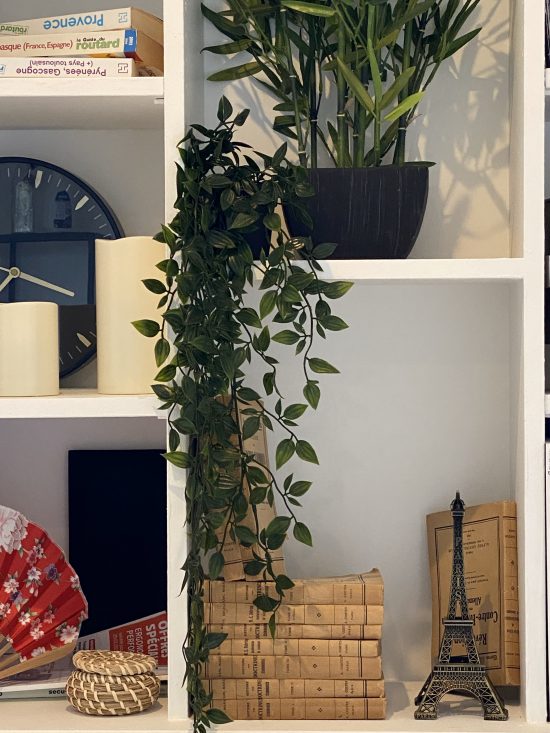
Apple iPhone 11 Pro Max, medium-range zoom, indoors

Apple iPhone 11 Pro Max, crop, loss of detail, strong noise
![]()
Google Pixel 4, medium-range zoom
![]()
Google Pixel 4, crop, good detail, some noise
Wide
Huawei P40 Pro
39
58
Honor Magic4 Ultimate
Best: Honor Magic4 Ultimate (58)
Thanks to a large image sensor in the ultra-wide camera and refined software processing, the P40 Pro is capable of capturing ultra-wide images with excellent texture/noise balance in all conditions. Dynamic range is very wide, there is no corner softness or distortion, and other artifacts are also well under control. Overall, ultra-wide image quality is far above the competition, but the camera has one important limitation—its maximum field of view is noticeably narrower than that of many competitors. In the comparison below, you can see how both the Oppo (16 mm) and the iPhone (13 mm) manage to squeeze more of the scene into the frame than the P40 Pro. On the plus side, distortion is least noticeable on the P40 Pro.
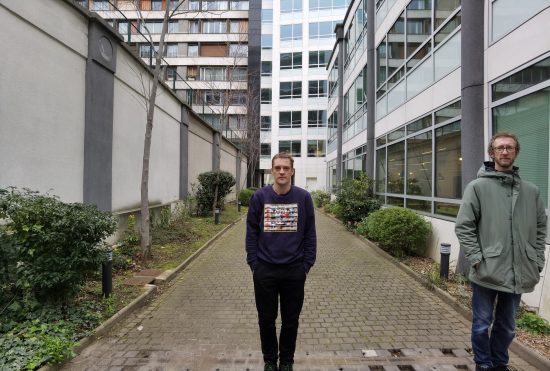
Huawei P40 Pro, 18 mm, well-controlled distortion
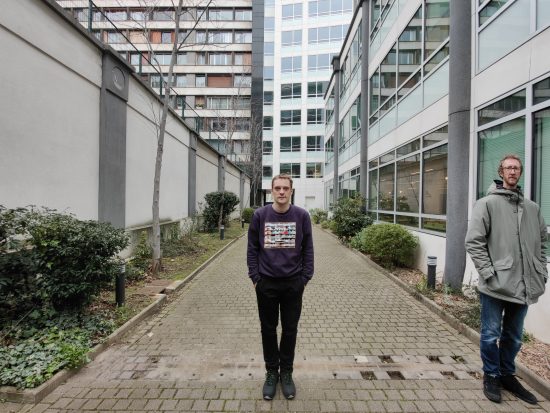
Oppo Find X2 Pro, 16 mm, some distortion
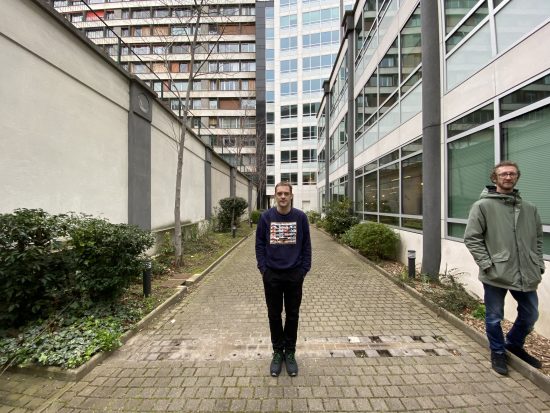
Apple iPhone 11 Pro Max, 13 mm, some distortion
This indoor portrait shows that the P40 Pro ultra-wide camera captures cleaner shots with better detail than the competition. Both the Oppo and Apple iPhone show lower levels of detail and noticeably more luminance noise than the Huawei.
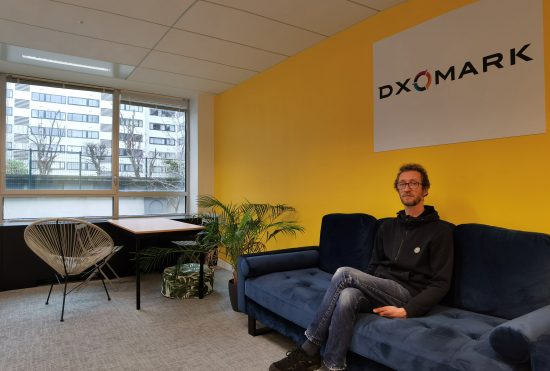
Huawei P40 Pro, 18 mm

Huawei P40 Pro, crop, good detail, low noise

Xiaomi Mi 10 Pro, 18 mm

Xiaomi Mi 10 Pro, crop, some lack of detail, luminance noise

Apple iPhone 11 Pro Max, 18 mm

Apple iPhone 11 Pro Max, strong lack of detail and noise
Video scores explained
By default, the Huawei P40 Pro records 1080p video at 30 frames per second on its ultra-wide camera, although 4K video at up to 60 fps is available on the main camera, with 4K/30 fps offering the best results overall, so that was the setting we used for testing and scoring the P40 Pro’s video mode.
At 113 points, the Huawei Mate P40 Pro achieves the best Video score under version 4 of the DXOMARK Camera protocol to date. The overall Video score is derived from performance and results across a range of attributes in the same way as the Photo score: Exposure (100), Color (95), Autofocus (100), Texture (92), Noise (98), Artifacts (78), and Stabilization (102)
Video clips recorded with Huawei P40 Pro have accurate target exposure with acceptable dynamic range. Exposure on faces is usually good across all light levels down to low light.
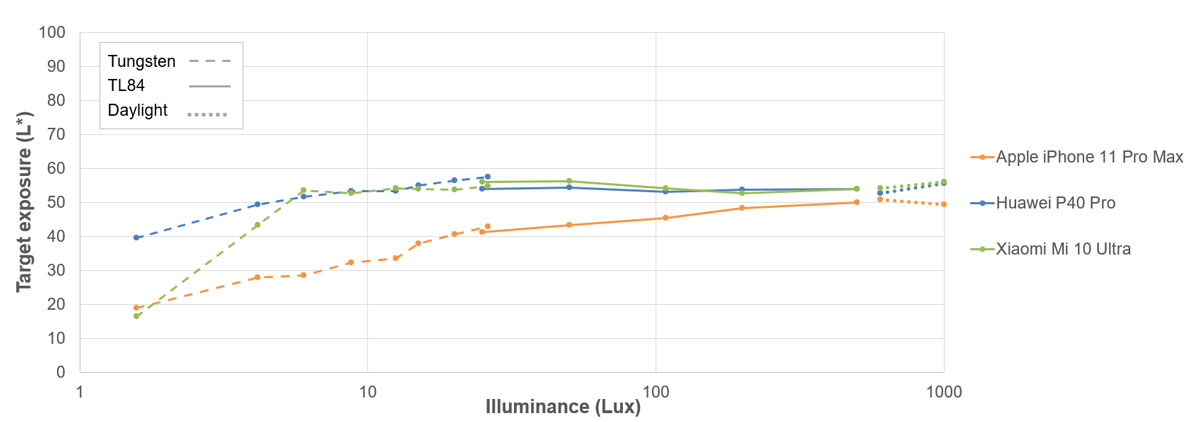
Video exposure comparison
Video color is nice when recording in bright outdoor light and under typical indoor conditions, but we also saw some white balance casts and white balance adaptation issues, especially in low light.
Huawei P40 Pro, indoor video
Xiaomi Mi 10 Ultra, indoor video
The Huawei’s texture/noise tradeoff is excellent in bright light and under indoor illumination, with high levels of detail and well-controlled noise. Strong noise is visible in low-light video clips, though, especially on textured areas in the frame and on moving subjects.
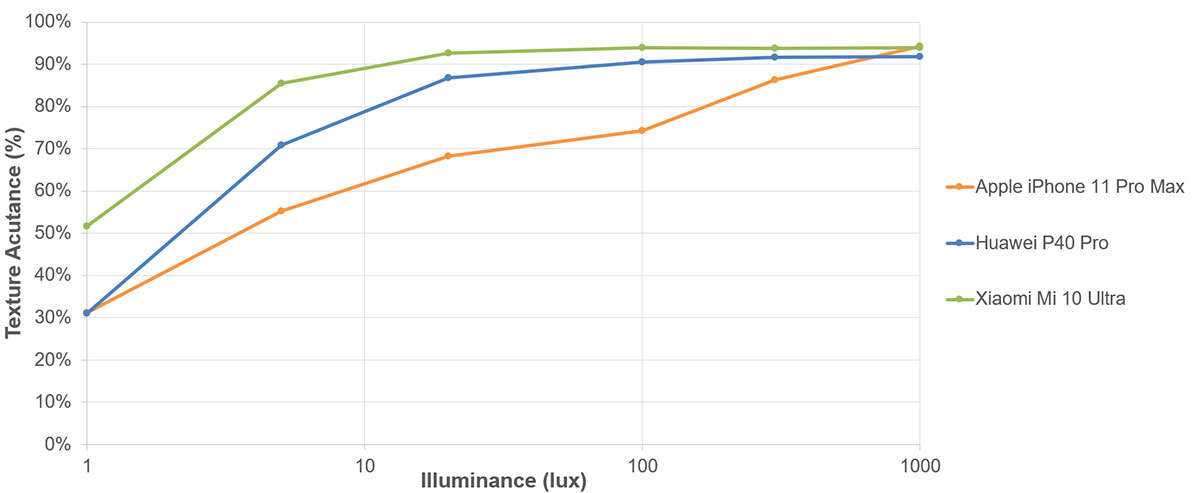
Video texture acutance comparison
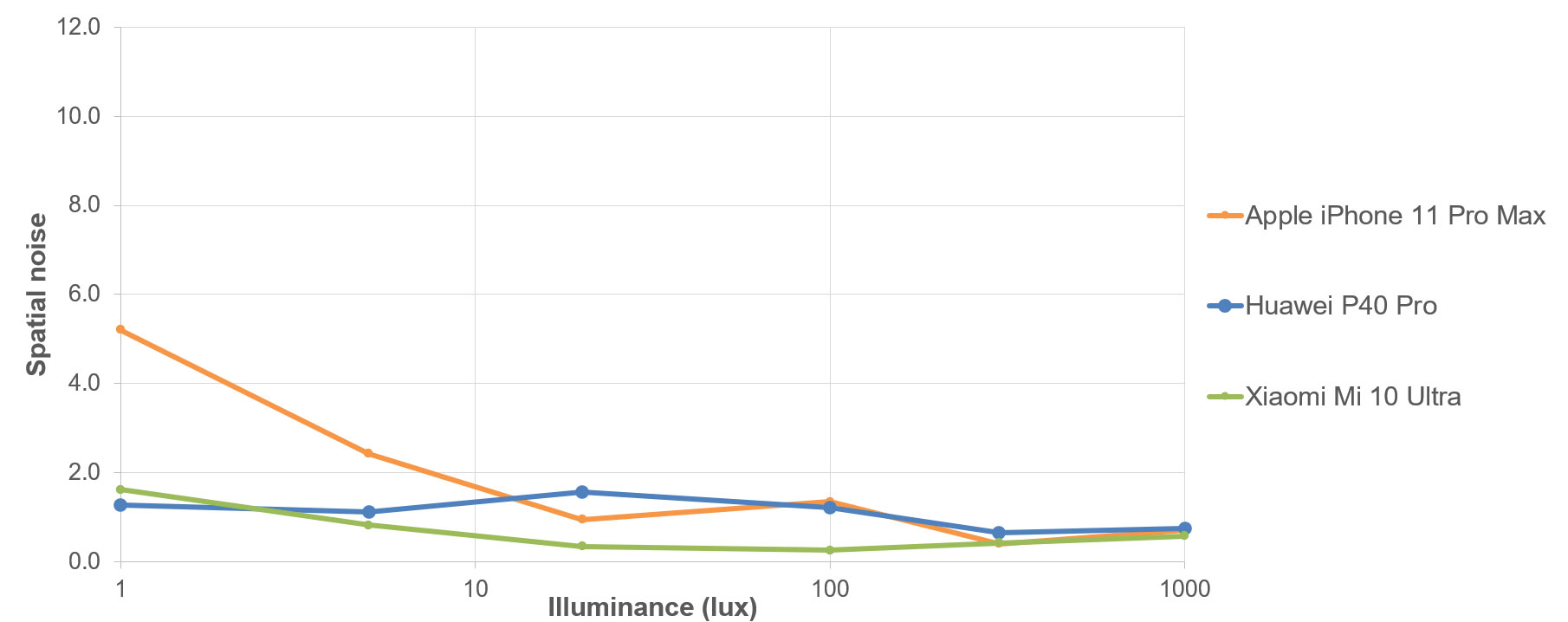
Video spatial noise comparison
Huawei P40 Pro, low-light video
Apple iPhone 11 Pro, low-light video
Video artifacts are generally well under control, but some color quantization in areas of plain color can be visible. Ghosting can often be seen in low light videos, including the sample clip above.
The Huawei’s video autofocus does a very good job, with good accuracy, fast reaction times, and reliable tracking. Video stabilization is very effective, too, although some sharpness differences can be visible between video frames in indoor conditions and in low light. On the plus side, camera motion is compensated for very well, even when the videographer is running while recording.
Huawei P40 Pro, outdoor video
Apple iPhone 11 Pro Max, outdoor video
Xiaomi Mi 10 Ultra, outdoor video
Conclusion
Under our updated DXOMARK Camera test protocol the Huawei P40 Pro maintains the second spot in our ranking and still offers one of the very best cameras you can find on a smartphone. Apart from some color color issues image quality on the primary camera is excellent across all attributes. The Huawei also delivers an outstanding texture/noise balance when shooting with the tele zoom and very good overall image output from the ultra-wide camera. The latter isn’t quite as wide as many competitors, though.
While there’s very little to complain about still image quality, the P40 Pro’s video clips are simply outstanding and the Huawei deservedly achieves the highest Video score of all devices tested under the protocol to date, making it an obvious choice for smartphone stills shooters and videographers alike.
Pros
- Very wide dynamic range
- Excellent texture/noise balance in photos and videos
- Good detail in medium- and long-range zoom shots
- Accurate exposure in night shots
- Good detail in bokeh shots
- Very effective video stabilization
- Nice colors in outdoor and indoor videos
- Videos have good exposure and acceptable dynamic range
- Fast and accurate video AF with good tracking
Cons
- Occasionally inaccurate color rendering and white balance casts
- Occasional slight underexposure in bright light
- Temporal noise on textures and moving objects in video, especially in low light
- Color quantization in video, especially when recording indoors and in low light
- Visible sharpness differences between video frames in indoor conditions and low light
Please also have a look at our Huawei P40 Pro gallery below. It includes images that our experts shot in a variety of situations and shooting modes for you to view and examine.
i
Shutter Speed : 2/2079 sec
ISO : 50
F-number : f/1.9
35mm Equivalent focal length : 123 mm
i

Medium-range zoom
i
Shutter Speed : 25/29036 sec
ISO : 50
F-number : f/1.9
35mm Equivalent focal length : 53 mm
i

Close-range zoom
i
Shutter Speed : 1/50 sec
ISO : 80
F-number : f/3.4
35mm Equivalent focal length : 213 mm
i

Medium-range zoom
i
Shutter Speed : 45/323741 sec
ISO : 50
F-number : f/1.9
35mm Equivalent focal length : 27 mm
i
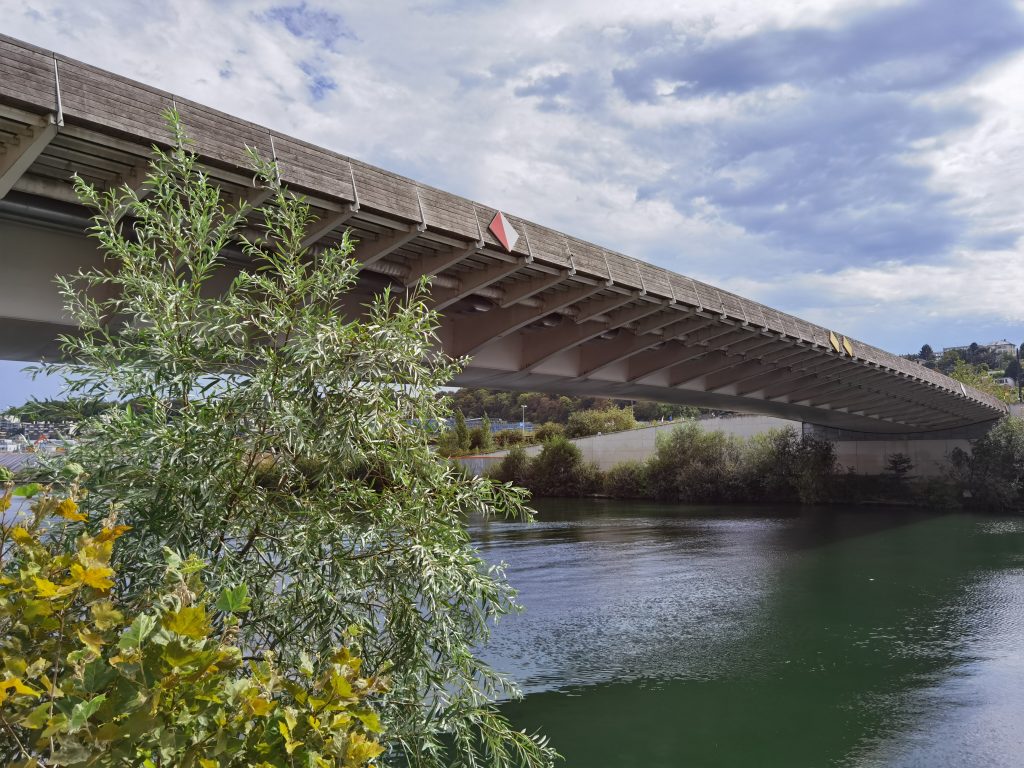
i
Shutter Speed : 1/50 sec
ISO : 100
F-number : f/1.9
35mm Equivalent focal length : 69 mm
i
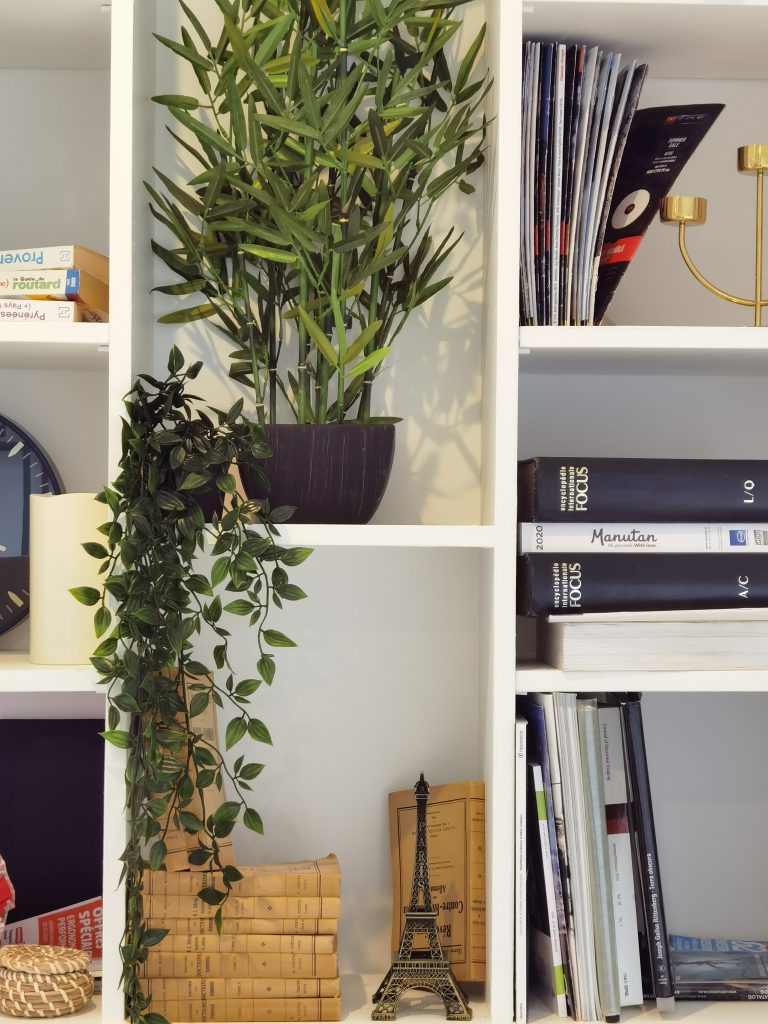
Close-range zoom
i
Shutter Speed : 1/50 sec
ISO : 160
F-number : f/1.9
35mm Equivalent focal length : 98 mm
i
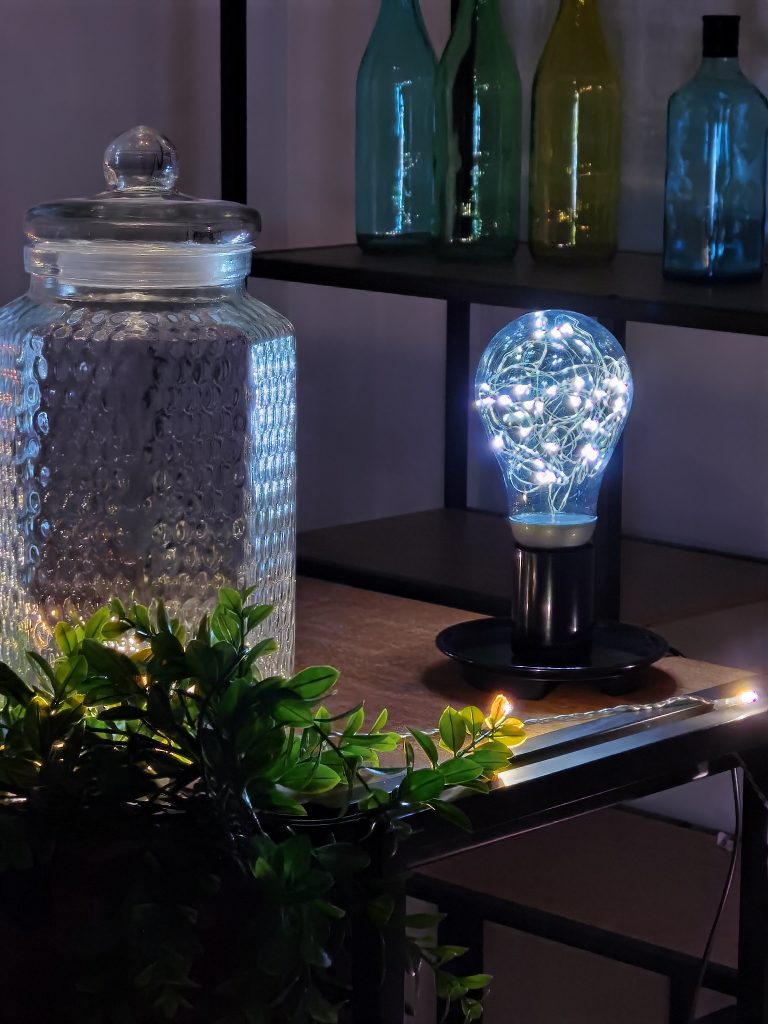
i
Shutter Speed : 1/25 sec
ISO : 500
F-number : f/1.9
35mm Equivalent focal length : 27 mm
i
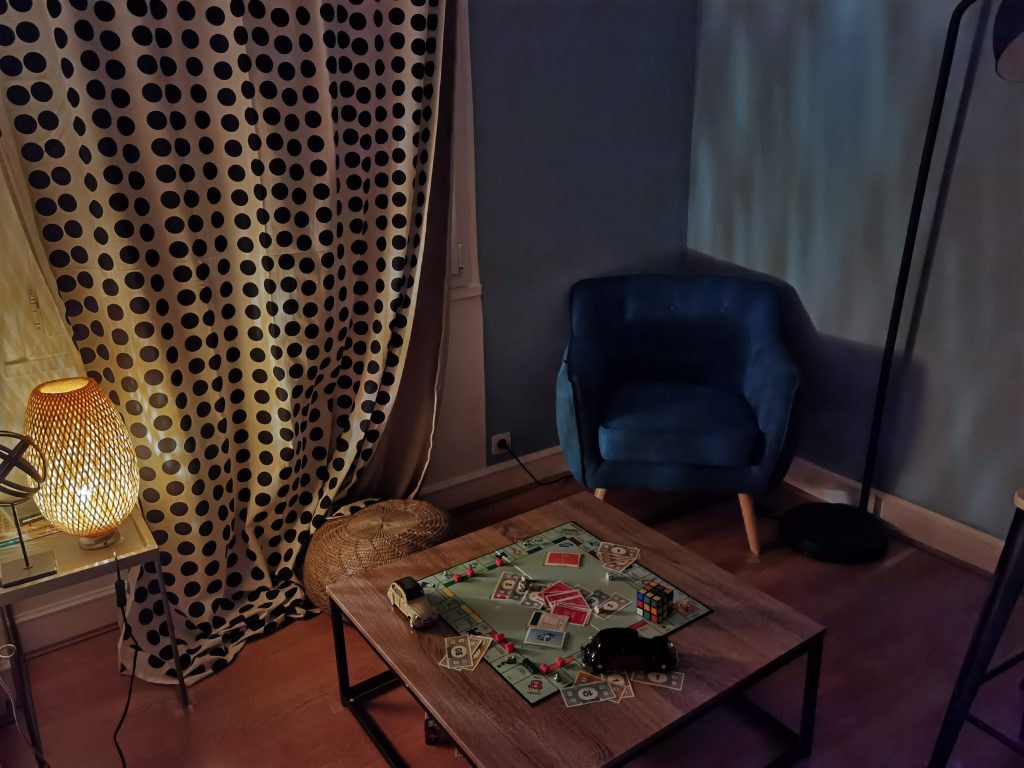
i
Shutter Speed : 1/40 sec
ISO : 250
F-number : f/1.9
35mm Equivalent focal length : 27 mm
i

i
Shutter Speed : 1/25 sec
ISO : 2000
F-number : f/1.9
35mm Equivalent focal length : 27 mm
i
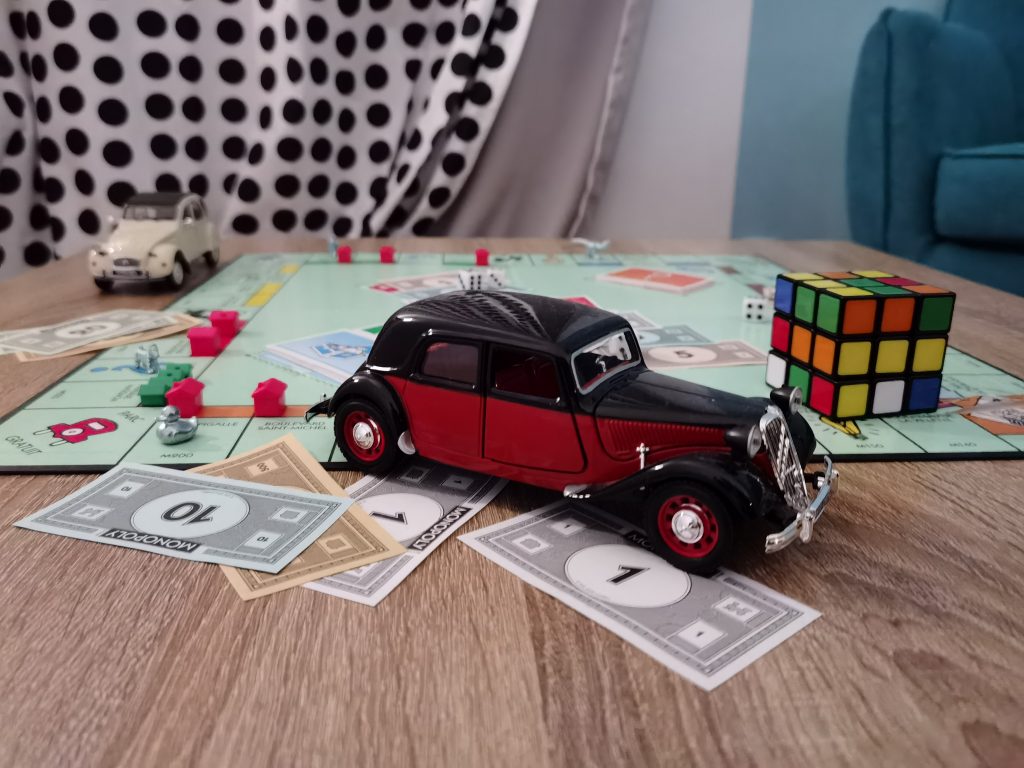
i
Shutter Speed : 1/20 sec
ISO : 640
F-number : f/1.9
35mm Equivalent focal length : 27 mm
i
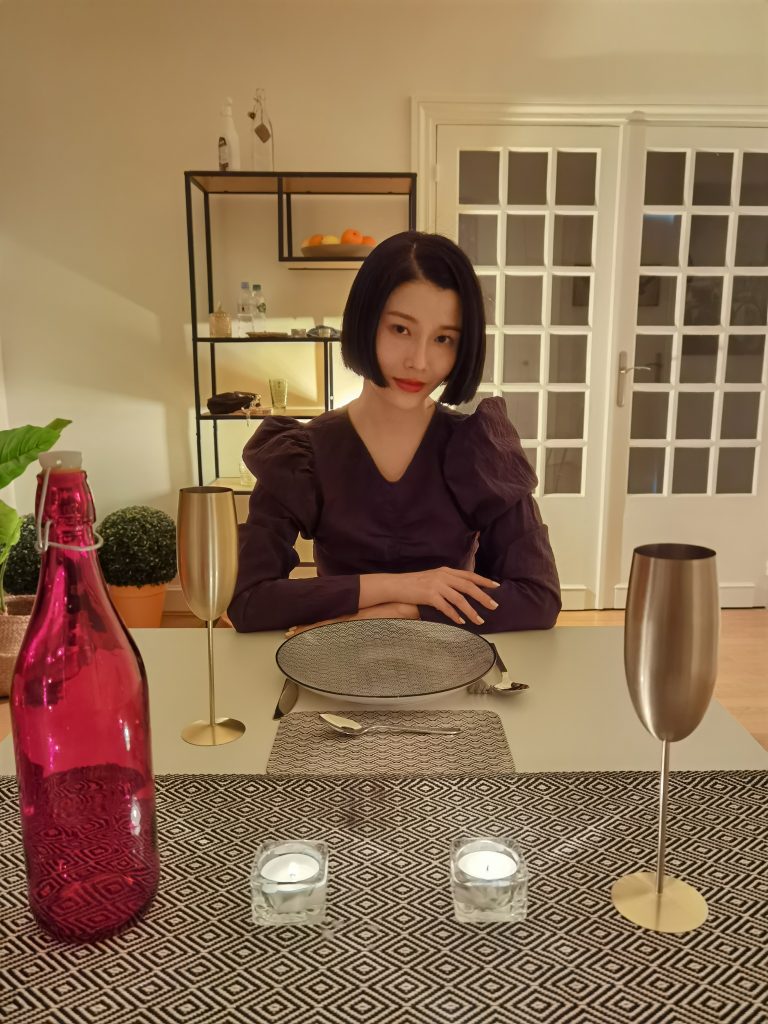
i
Shutter Speed : 1/135 sec
ISO : 50
F-number : f/1.9
35mm Equivalent focal length : 27 mm
i
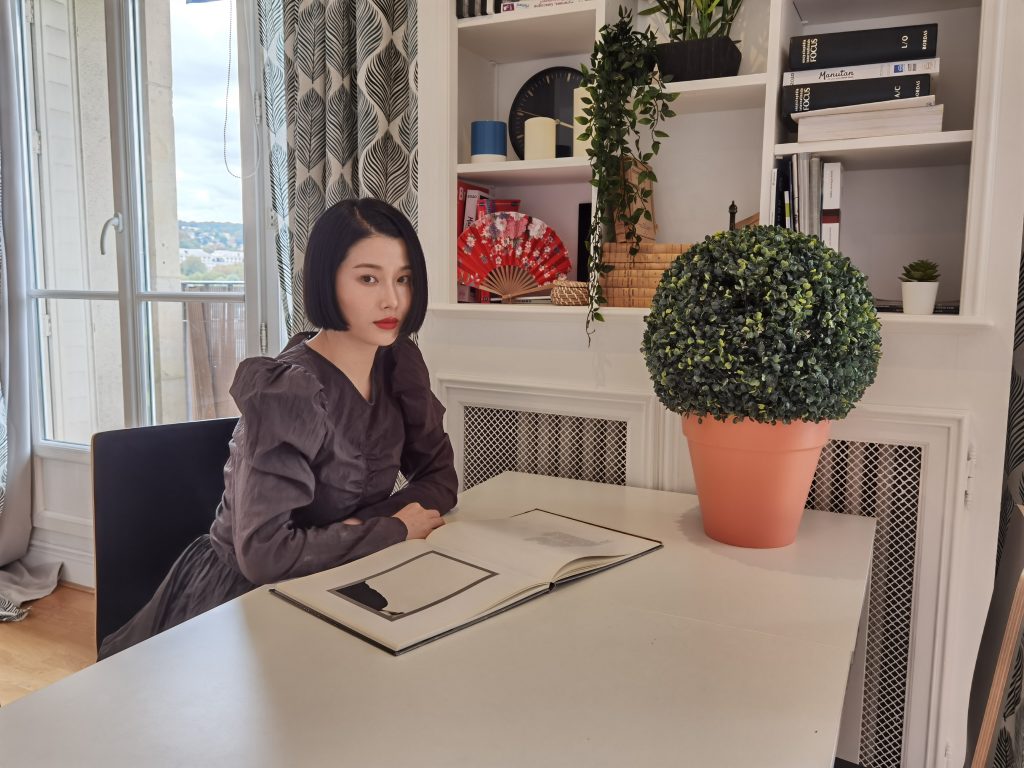
i
Shutter Speed : 1/279 sec
ISO : 50
F-number : f/1.9
35mm Equivalent focal length : 27 mm
i
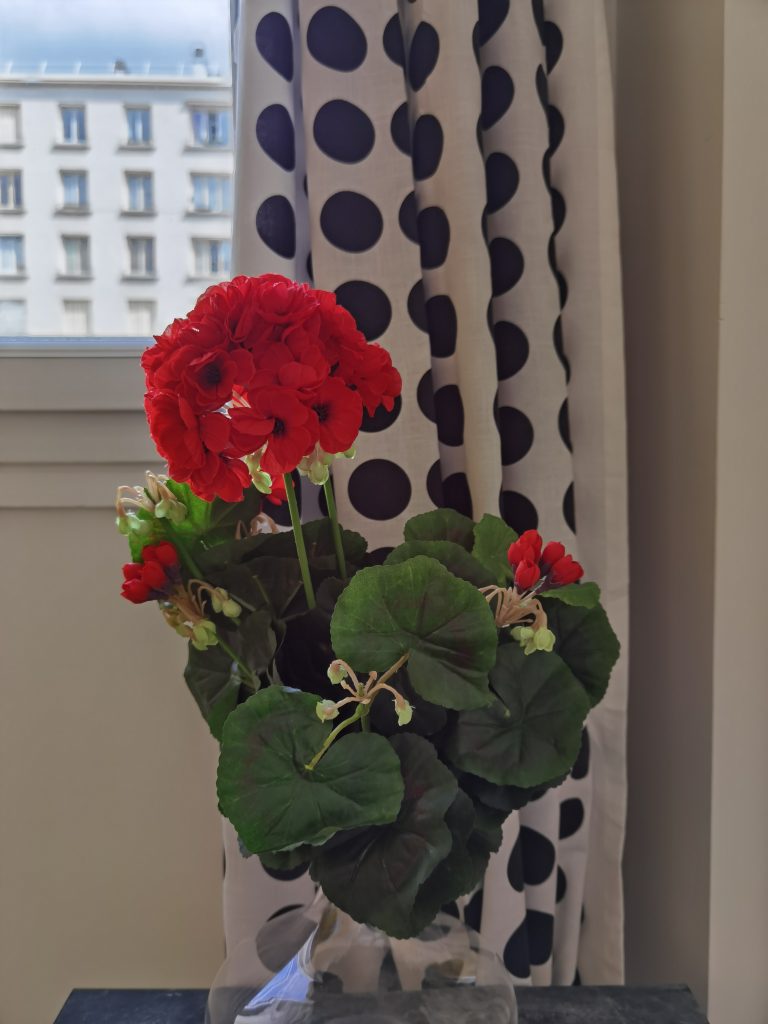
i
Shutter Speed : 1/4329 sec
ISO : 50
F-number : f/1.9
35mm Equivalent focal length : 27 mm
i
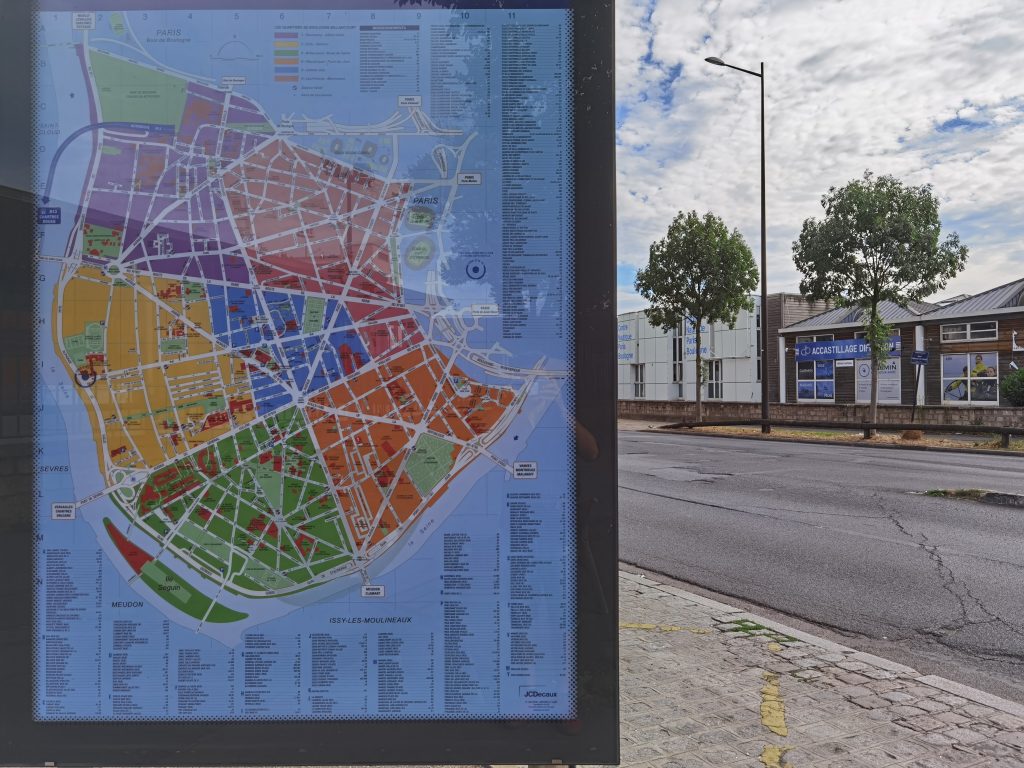
i
Shutter Speed : 1/100 sec
ISO : 100
F-number : f/1.9
35mm Equivalent focal length : 27 mm
i
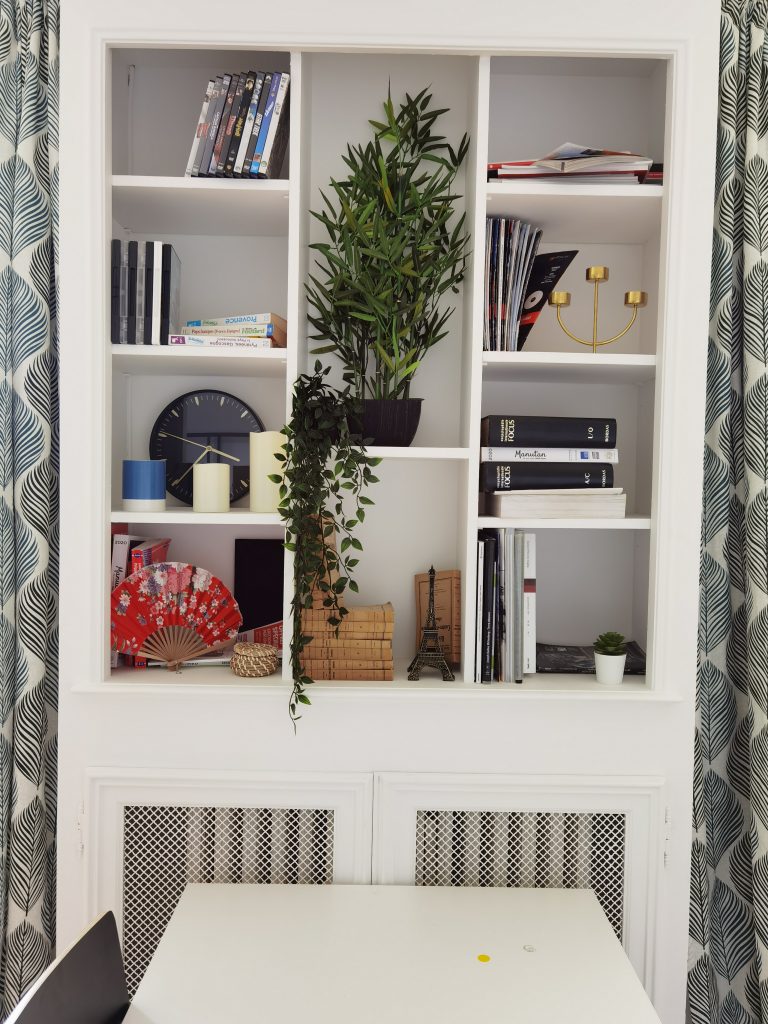
i
Shutter Speed : 3/100 sec
ISO : 320
F-number : f/1.9
35mm Equivalent focal length : 27 mm
i
